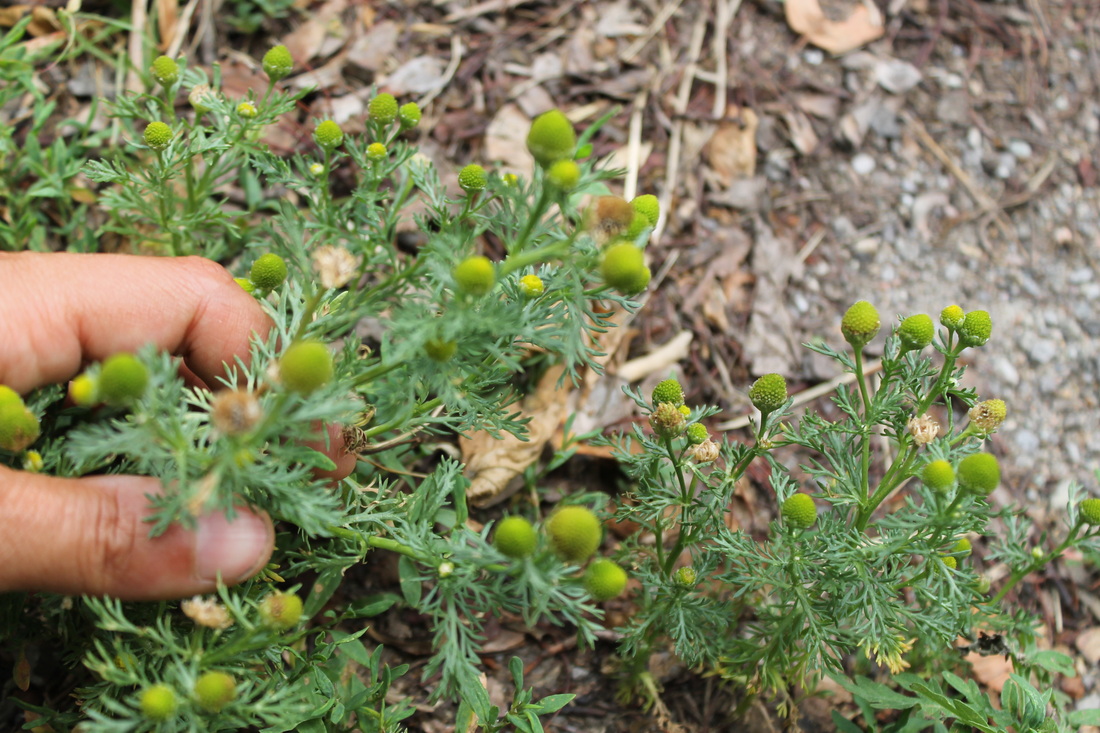
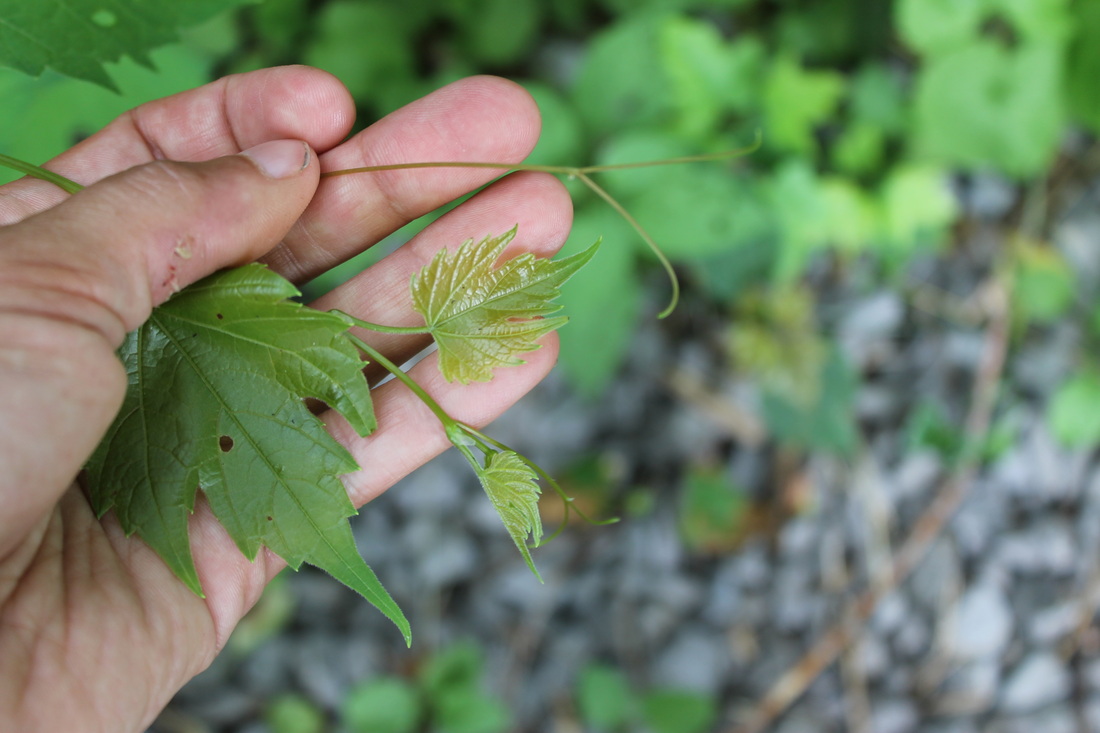
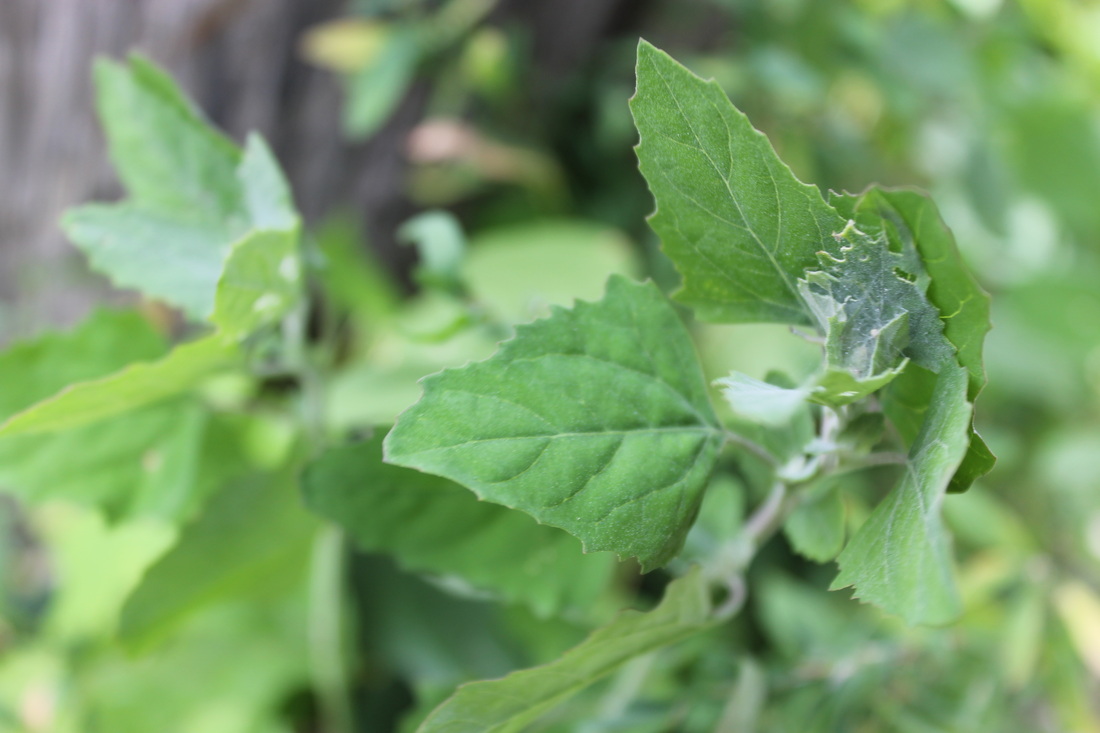
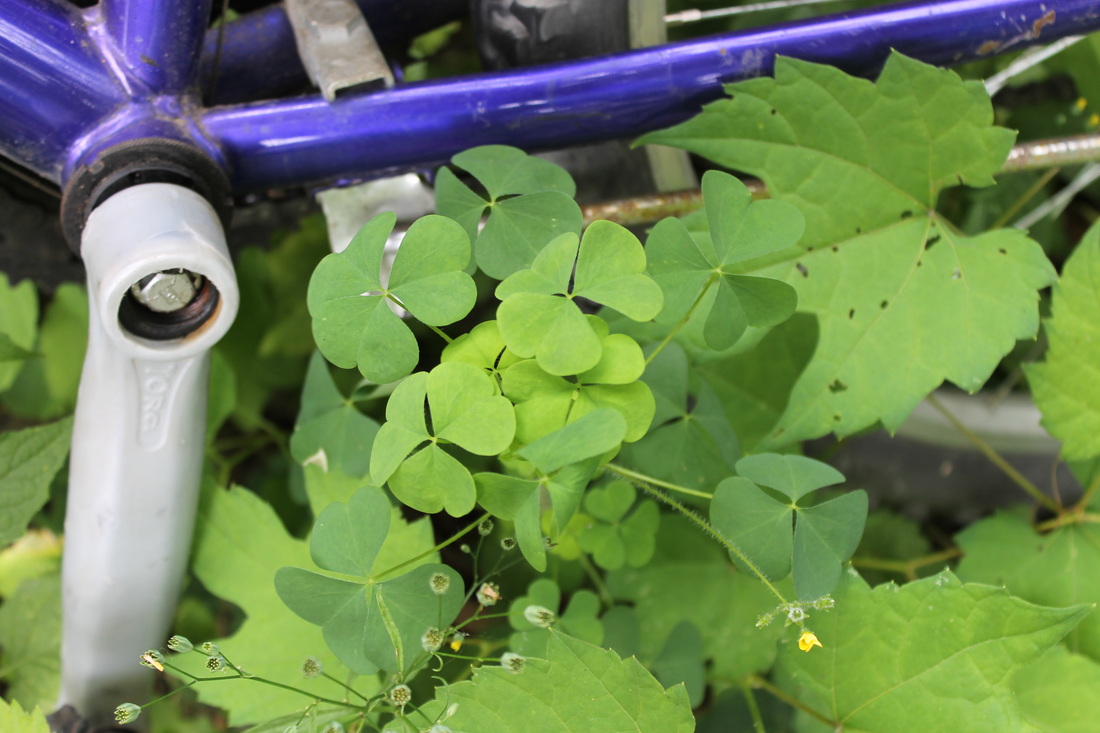
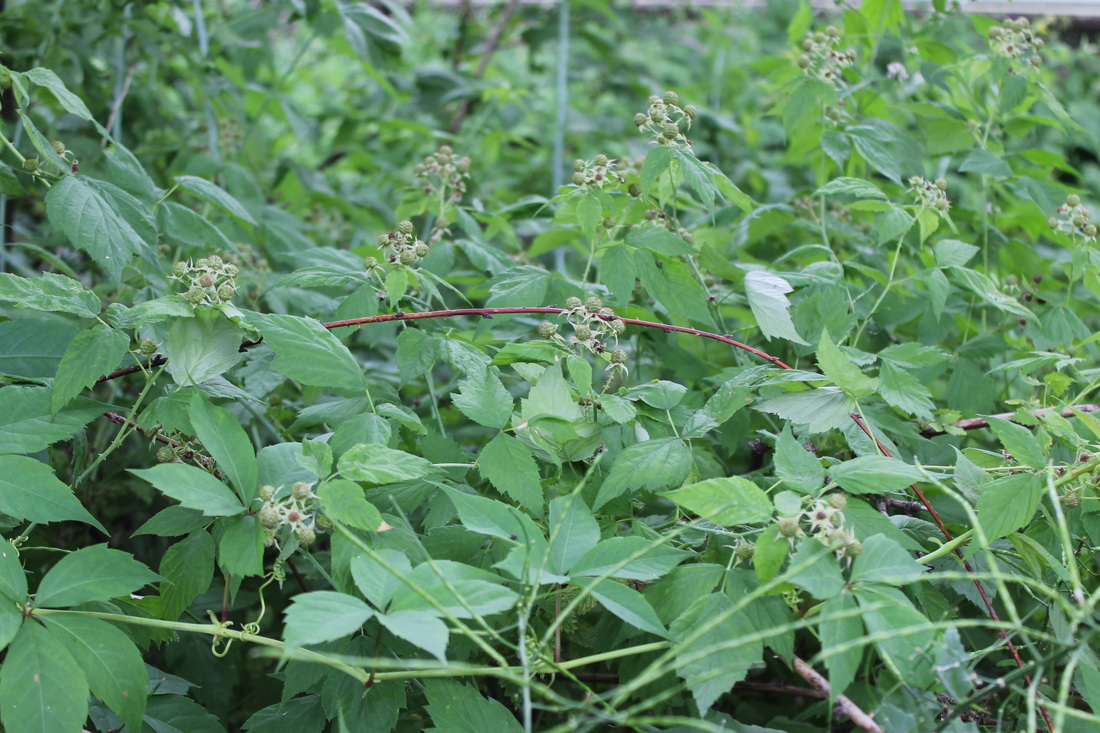
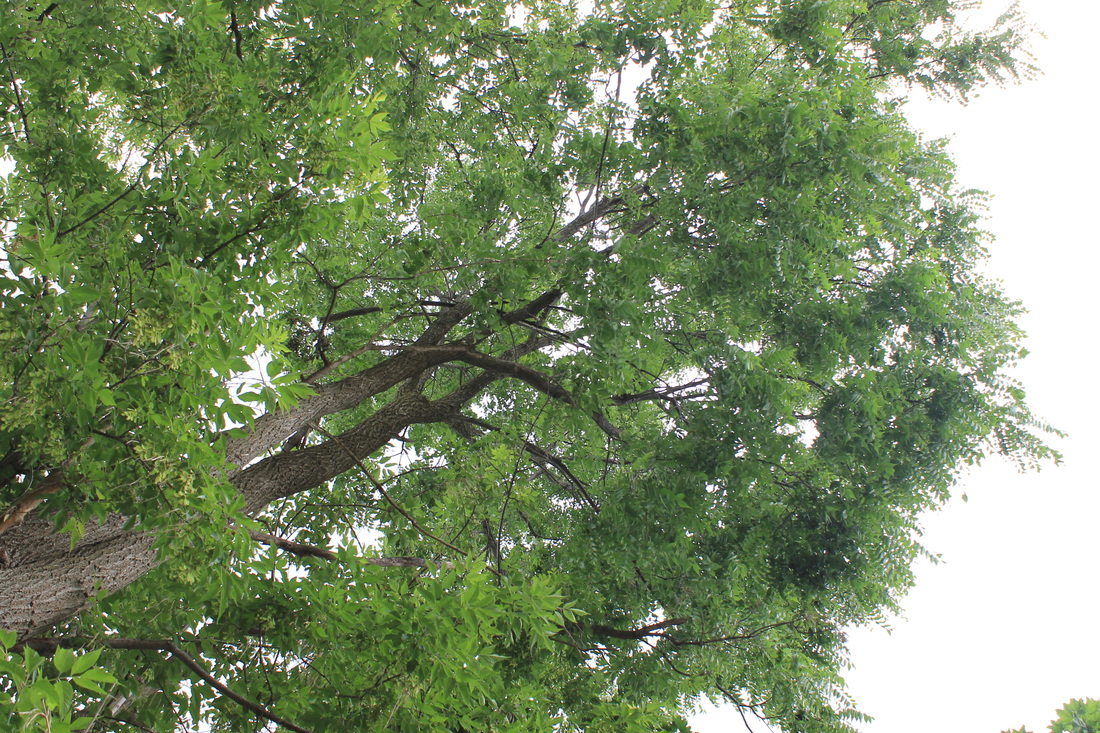
Resources, stories, mysteries, and tales of adventure for naturalists, adventurers, and woods-wanderers.
|
Remember that Joni Mitchell song about paving over heaven? Imagine someone paving over a meadow back when Joni recorded 'Big Yellow Taxi' back in 1970. That meadow is now my driveway. I live in a very old building with a couple of different apartments in it, and the driveway accommodates three cars on a regular basis. Who knows how many exhaust pipes have coughed lead-laced fumes into the gravelly earth, or how many fluids have leaked from cracked gaskets. Who knows the trash that has languished there and bled icky juices into the dirt, what dog poop has been smeared, what pesticide residues persist. Turns out, though, that heaven isn't so easy to squish. I'm willing to conceded that the 'Heaven' designation might be farfetched for our little parking lot. But if your idea of heaven includes incredible resilience and generosity -- well then, have I got a story for you. Once spring was underway a bright host of medicinal, edible, and useful plants sprang up in our small patch of gravel and gas drippings. Diversity like this is astounding in these sacrificial places that we've decided are ok to contaminate. This little piece of heaven also highlights how accessible wildcrafting can be -- we don't have to go too far to make friends, if not to make lunch. I would drive over the pineapple weed again and again and be greeted with that sweet fragrance upon opening my car door, and think 'dang, what an incredible blessing it is to park on a carpet of very smelly flowers.' The same little lightbulb of gratitude would blink on when I would take out the compost and graze for a few blissful moments on the black raspberries. Or when I would pad down the fire escape barefoot to retrieve something from my car and step carefully from plantain to plantain to avoid the broken glass. Or once when I emerged tearfully from my car after a hard day and was welcomed home by the strong backbone and soft sway of the flowering motherwort. I felt I should document the plants of this place. All the edible and medicinal plants featured in this post were photographed in my driveway one muggy July afternoon. All of these plants look different now, as they fruit, seed, or retreat into their roots in preparation for winter, but my gratitude remains. Some basic rules for wildcrafting: if it's going in or on your body, you need to be certain that you have the right plant. It's serious, but it's not that hard. The rule I teach kids is that they must identify three distinguishing characteristics on the plant before they use it. No shortcuts; if you're not sure, sit back and take a good look, then do some research. Do some googling or look in some books before you eat or use any of these plants. I derive much geeky pleasure from keying out plants in 'Newcomb's Wildflower Guide' by Lawrence Newcomb. You can buy it from Amazon or from a local bookstore; it's a great investment. Equally important is to practice wildcrafting in areas that you are reasonably sure are clean; away from roadways, pesticides, dog pee, heavy metals, raccoon poop, etc. You know, I used to think plant study was for people who were too slow-moving to be trackers. I used to proudly think of myself as a mammal and bird person with a casual interest in tree ID. The truth is that my sledgehammer-like enthusiasm for nature didn't have the subtlety to relate to the plant world. For me, interest in a subject is completely dependent on how deeply I can relate to and empathize with what is before me. The learning is hungrier once you make friends with your subject. But how to relate to a plant? Plants are very different creatures than human beings, and incredibly complex, both in their ecology and in their chemical constituents, many of which are useful to us as food and medicine, or in crafts. That complexity now strikes me as fascinating and almost magical, an unending well of discovery -- whereas before it was just baffling. Cause plants were for people who weren't bad ass enough to follow wild animals around.  This plant is incredibly endearing. It grows carpet-like on the driveway, and my car crushes it every time I pull in so that when I emerge I am greeted with the sweet fragrance of pineapple weed, aka Matricaria discoidea. There is a similar looking plant around; look for a low-growing plant with ferny little leaves, little yellow petal-less flowers, and crush it for the amazing smell of pineapple. Makes a wonderful tea, and some say it repels bugs if you rub it on your skin. Can't say if that's true, but dang what a delightful plant! Obviously that is untrue. So how did I make friends with plants? It started with friction fire. I had to know which trees had soft wood, which were hard, which were resinous, which had bark that could be wound into cordage. Before I internalized the impulse to google everything (or, I guess, look it up in a book, duh), I spent a couple of years trying to figure out which plant was horseweed because I was convinced it was the only plant that would allow me to finally get a hand drill coal by myself. I needed plants for making rope, for tanning hides. I needed to know about the growth habits and habitat preferences of certain plants to be a better tracker; I needed to know about plantain and jewelweed because children and red ants and poison ivy are cosmically bound to one another. By using plants, and not particularly graciously at first, might I add, I made friends with them. I started to see information, qualities, personality instead of a wall of green.  Wild grape aka Vitis spp. Leaves, tendrils, and fruit are edible. In the spring time, sever a thick grape vine and potable water drips from the wound like a leaky faucet. Look for a vine that attaches via little winding tendrils, and those classic grape lobed and toothed leaves. Not to be confused with Virginia Creeper, which has palmate-compound leaves and also attaches via tendril. Plants are incredibly useful, though in my heart of hearts I like to think of plants as sentient, and 'useful' is not a completely respectful way of describing a sentient creature. Now, stay with me, skeptics. I will admit that I enjoy a very active imagination, but I do try to keep one claw hooked into the meat of conventional reality. I think of plants as sentient, as possessing of species-specific personalities and even intentions because it's fun and it feels right and good. That is reason enough for me, but there is another: learning is far more efficient when one has a strong empathetic relationship to the subject. It's way easier to relate to plants if you can conceptualize their qualities and medicinal actions as components of their personalities. Once I found some common ground with plants, I started to have fun pondering some Deep Unanswerables: what is it like to be a plant? What is it like to be yarrow? What is it like to be jewelweed? I will probably never know the answers to those questions. Plants clearly don't experience the world the way people do: the way we uptake information is so vastly different. We experience the world as individuals and plants, well -- who knows? We are mobile and plants are not; plants subsist upon dirt and sunlight while we merely revel in it___ the list of our differences is endless, and for most of us there may be no translation. But those questions are, again, fun and so useful in learning because it shifts perspective. We encourage this kind of imagination and creativity in kindergarten and preschool --- but it's gotta be good for adults too.  Oh yummers! I think this is my favorite wild green. Lambsquarters, aka Chenopodium album. It is such a weed, which is such a blessing because it is so delicious and nutritious. Look for diamondey/goose foot shaped leaves with teeth and a white powdery coating. So yummy. It will probably make itself at home in your garden; just eat it all up, raw or cooked. Contains oxalic acid, so don't eat one billion leaves. Adding to salads, quiches, or snacking is just fine. I graze without reservations in my own and others' gardens. I feel a little bit squishy and sensitive about the plants-as-people approach. It works so well, and for me has resulted in a ton of learning and a real sense of empathy and relationship with the plant realm. There is a downside: that little (or big) ping of hurt whenever I see that the great, richly diverse meadow at the park gets mowed __ but that is the cost of cultivating empathy for other creatures. It does us way more good than harm. And I think it is important that we feel those hurty pings when we encounter disregard for the natural world.  That little darling with the heart-shaped leaves is wood sorrel, aka Oxalis spp. I think this one is Oxalis dillenii, and if anyone wants to correct me I'd be grateful. Superficially similar to clover, but with tender heart-shaped leaves and little yellow flowers. Sour and delicious! Great in salad or lemonade. This one also contains oxalic acid, so don't eat pounds of it. Trail side snacks and addition to salads are totally safe. Imagination and imaginative relationships are so personal, constructive, and sensitive -- I'd even call em sacred. Not to be stepped on, sneered at, or discouraged. Especially in children, but especially in adults, but ESPECIALLY in children.  Black raspberry! You can be sure that I nommed hard on these, raccoon poop be damned. Palmate-compound leaves, 3-5 leaflets, prickles, and delicious fruits! Rubus occidentalis. What's the difference between black raspberries and blackberries? Black raspberries taste like Christmas in July, whereas blackberries taste like August. Also, black raspberries are hollow when you pick them, and blackberries include a white heart. Black raspberries also have a much whiter leaf underside than blackberries; they are nearly white on the bottom. Blackberries also have waaaay meaner prickles than raspberries in general. Nom nom nom.  Black walnut tree. AKA friend to squirrels everywhere. AKA Juglans nigra. Its fruit is great for impromptu street hockey. The fragrant husks are a powerful anti-parasitic medicine, natural dye, and help with hide tanning. The nuts are walnuts! Need I say more? One time I was de-husking some walnuts in the driveway with a hammer and ended up with yellow clothes, shoes, arms, and temporarily blind in one eye from squirting the juice into my face. So worth it. I can't wait to gather some of these beauties this fall. This concludes the tour of 'Heaven in a Parking Lot'. Thanks for reading. I know we've all noticed intrepid plants bursting out of unlikely places, and I want to see your photos! If you notice a plant rocking out in an alleyway or taking advantage of a crack in the sidewalk, take a picture and post it to our facebook page here! Woot woot!
3 Comments
Mary Hutton
9/10/2014 12:19:03 am
Wonderful D'Arcy!!!!!!
Reply
Susan Riley
9/10/2014 10:27:09 am
Fascinating. I am just home from Newfoundland, too, where I was hard-pressed to identify blueberries! Well, cautious. I did notice there are are least three different kinds of blue berries; also, bundles of fire-engine red berries growing on small, tidy plants. Because no one appeared to be eating them _ neither birds, nor hikers _ I assumed they were decorative. If I can figure out how to post a pic here, I will add some and you can puzzle it all out for me! Thanks for this!
Reply
Zoe
9/11/2014 12:37:44 am
This is the best!!
Reply
Your comment will be posted after it is approved.
Leave a Reply. |
AuthorHi everyone! I'm a small, energetic mammal. I sometimes go by the name Zapus hudsonicus. Archives
July 2016
Categories
All
|